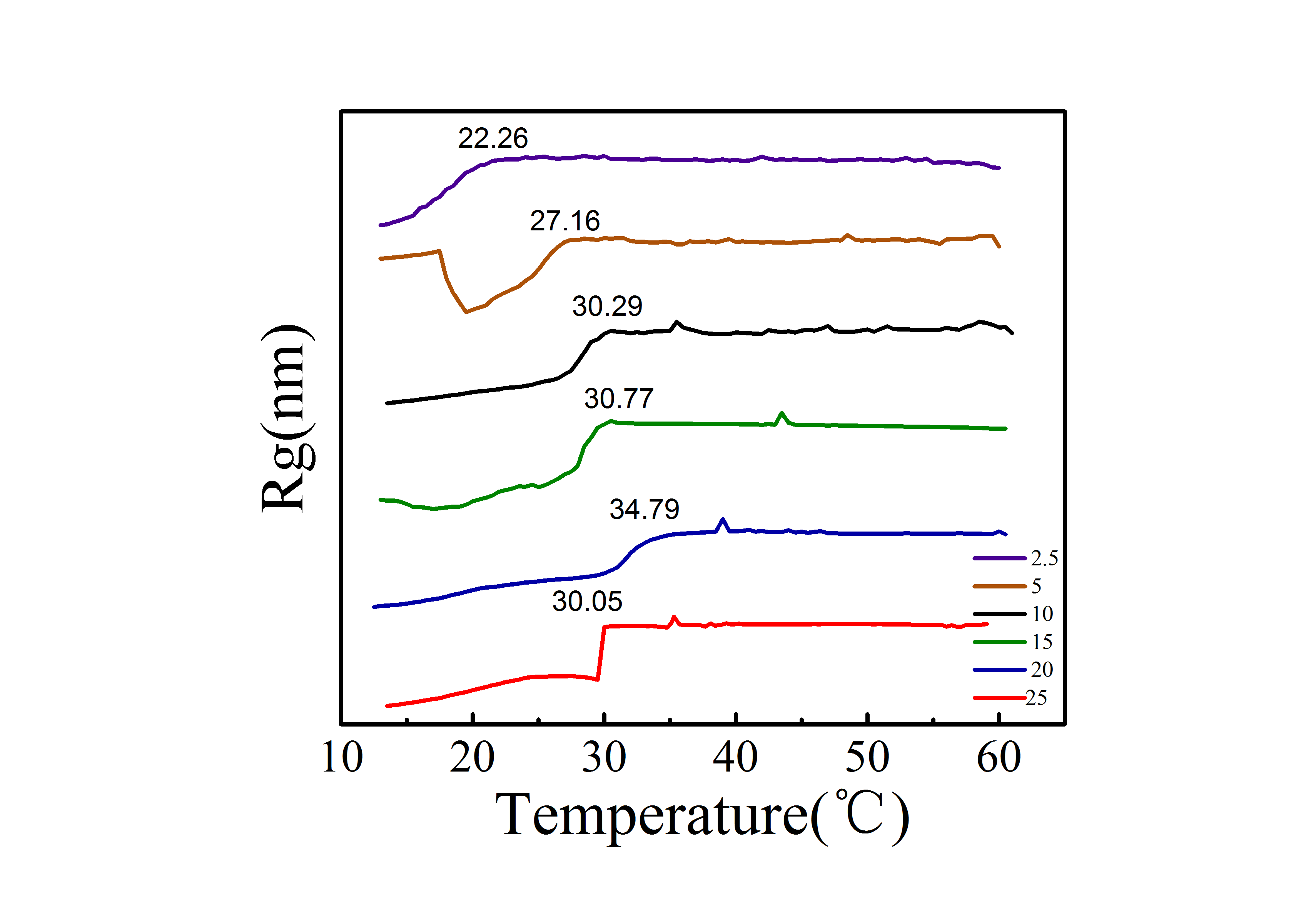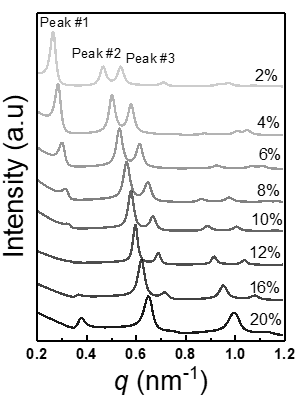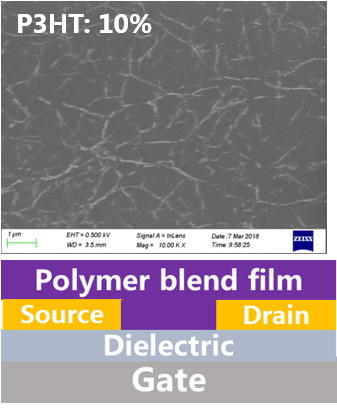Optoelectronics and Self-Assembly Group
The research group is dedicated to the study of solution processing and microstructure characterization of conductive polymers, and the hierarchical supramolecular self-assembly behavior of ionic oligomers X-ray scattering in aqueous solution.
Conductive polymer solution processing and regulation

Study the intrinsic relationship between the initial chain conformation , phase structure of the conducting polymer solution and the formation of a film-forming condensed structure. Taking the P3HT:PCBM model system as the research object, an experimental method for on-line study of solution state and structure by synchronous radiation scattering was developed and established. The formation of multi-scale structures and morphologies such as topological entanglement, molecular aggregation, possible pre-ordering, and new phase states of molecular chains from the isotropic solution through the phase boundary to the occurrence of crystallization or phase separation was investigated. The evolution provides the basic physical basis for the regulation of the structure and morphology of thin films of conductive polymer solution wet processed
Lei Sun
Ionic order

Lyotropic supramolecular liquid crystals have attracted wide attention because of their excellent processability, recyclability, and potential applications. However, how to control the multi-stage self-assembly behavior of supramolecular liquid crystals is still facing challenges. Our research group autonomously synthesized ionic oligomers that spontaneously form a hierarchical ordered structure in aqueous solution. This research is to use this ionic oligomer as the research object, and to study multi-stage self-assembly behavior of the supramolecular liquid crystals at different scales in combination with X-ray scattering.
Weiheng Huang
Polymer semiconductor flexible electronics

Polymer semiconductors have attracted increasing interest in recent decades because of their advantages of their flexibility, light weight, and easy solution fabrication for large area devices. However, there is still plenty scope to further reduce cost, and improve device performance and mechanical stretchability to meet requirements for wide and attractive application such as wearable electronics, biomedical devices, sensors, and so on.My research focus on the optimization of electrical and mechanical properties of conjugated Polymer semiconductors for flexible electronics.
Jingnan Zhao